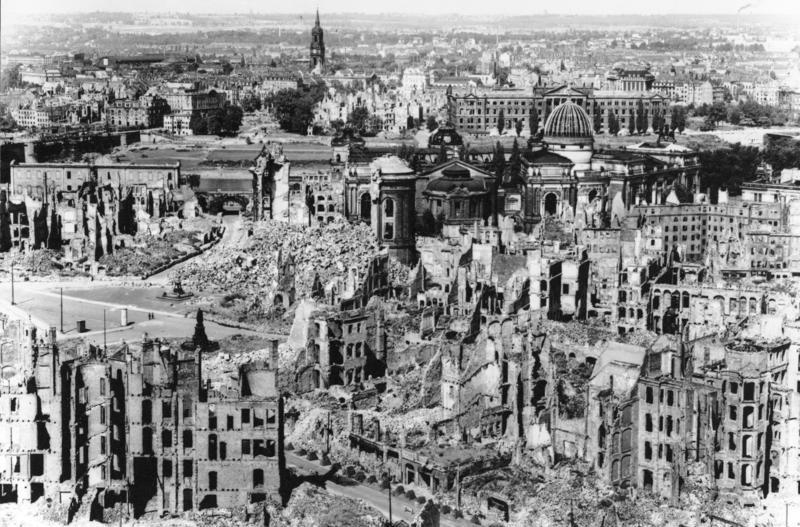Dresden is a city located in eastern Germany that recently paid its respects to the thousands of people who were victims of the Allied firebombing attack in February 1945. An astounding 13,000 people gathered on both sides of Dresden’s Elbe River on February 13th to link arms in solidarity. The demonstration was a sign of peace and was intended to commemorate the thousands of victims who died during the attack, over seventy years ago. This year’s event was a sign of respect to the dead. There was an impressive turnout, albeit amidst right wing demonstrators whose message ran contrary to the overall city’s message of peace and tolerance.
The firebomb attack was motivated because of Dresden’s support for Nazi initiatives. This ceremony was intended to remind current citizens of the damaging pro-Nazi sentiments that precipitated the attack. Dresden Mayor Dirk Hilbert took this gathering as an opportunity to lay a wreath at the St. Pauli cemetery. Located here are the graves of children of eastern European slave laborers, murdered by the Nazis.
The mayor made a speech and took the opportunity to remind those assembled to also bear in mind the people who are fleeing war and oppression today. He declared that anyone who closes their heart to those seeking protection from current wars could not possibly grasp the message and reason for the Dresden memorial gathering.
The Dresden Frauenkirche, also known as Church of Our Lady, invited people to light a candle in memory of all the victims killed in those raids. At 9:45 p.m. local time (2045 UTC) the church bells chimed, indicating the exact time of the first attack 71 years prior.
From February 13 to February 15, 1945, the British and United States air forces conducted four raids that dropped more than 3,900 tons of explosives onto the city. This had been the city once referred to as the “Florence of the Elbe.” The bombing wreaked havoc and chaos, eventually creating a firestorm. This is a phenomenon that occurs when a fire reaches such a level of intensity that it sucks all the oxygen out of the surrounding area. Many people in the area who weren’t killed in the initial blasts likely suffocated.
The exact number of casualties has never been confirmed, but it is estimated that somewhere between 22,000 and 25,000 people – most of them innocent civilians. Depending on who you ask, there are many that felt these attacks were unjustified and unnecessary, considering how heavy the civilian casualties were.
Historians and writers such as Gunter Grass took their analysis one step further, labeling the action as a war crime. The Allies felt at the time that the raid was justified to halt German military production and that the city was a key transport hub for the German army.
On the day prior to these commemorations, 550-650 right wing demonstrators engaged in a march through the southeast of Dresden. In response, more than 300 people showed up in opposition to this march. An additional 300 members of the right-leaning Alternative for Germany (AFD) party held their own rally at the city’s Old Market Square, where they were confronted by 20 counter-demonstrators.
The thousands who gathered to commemorate the 1945 victims were also there to demonstrate unity against the right wing populist movement PEGIDA (Patriotic Europeans against the Islamization of the West). There has been a growing right wing sentiment in the area due to the xenophobic movement, which has been rallying in the city on most Monday evenings since October 2014 with hopes of spreading their ideologies.
However, thousands of citizens formed a human chain, to symbolize their rejection of these sentiments. Saxony state premier Stanislaw Tillich stated that the chain represents a strong stance in exact opposition to the message of the most extreme right wing groups. It shows that theirs is an open-minded, accepting, and peace-loving city. Dresden has clearly been changed forever by that terrible night in February 1945.
